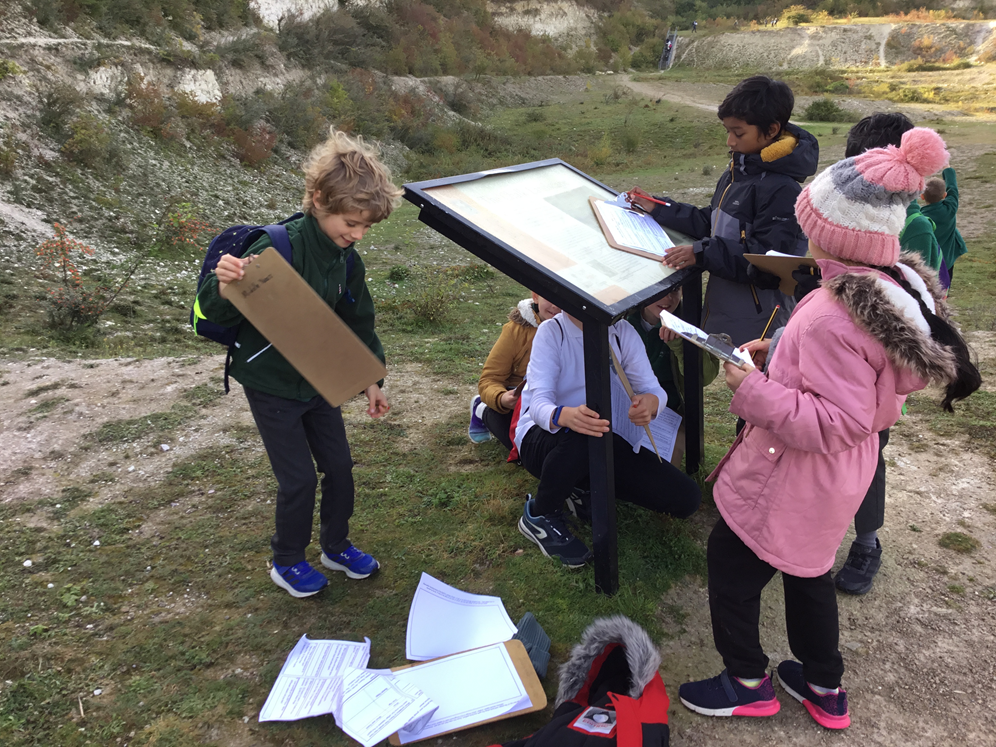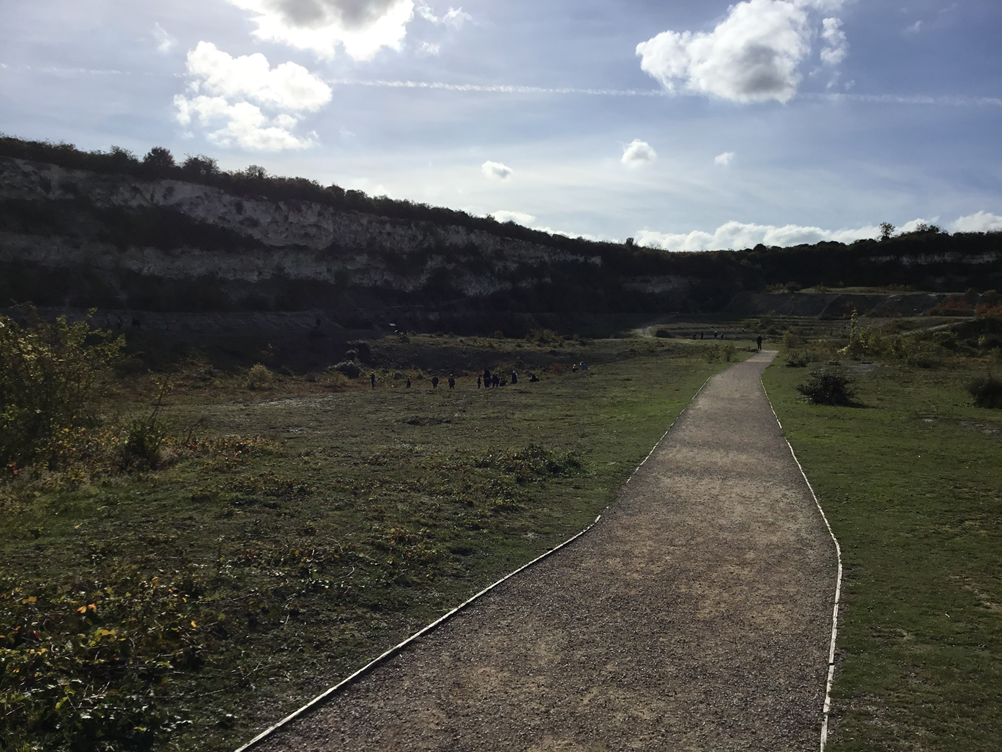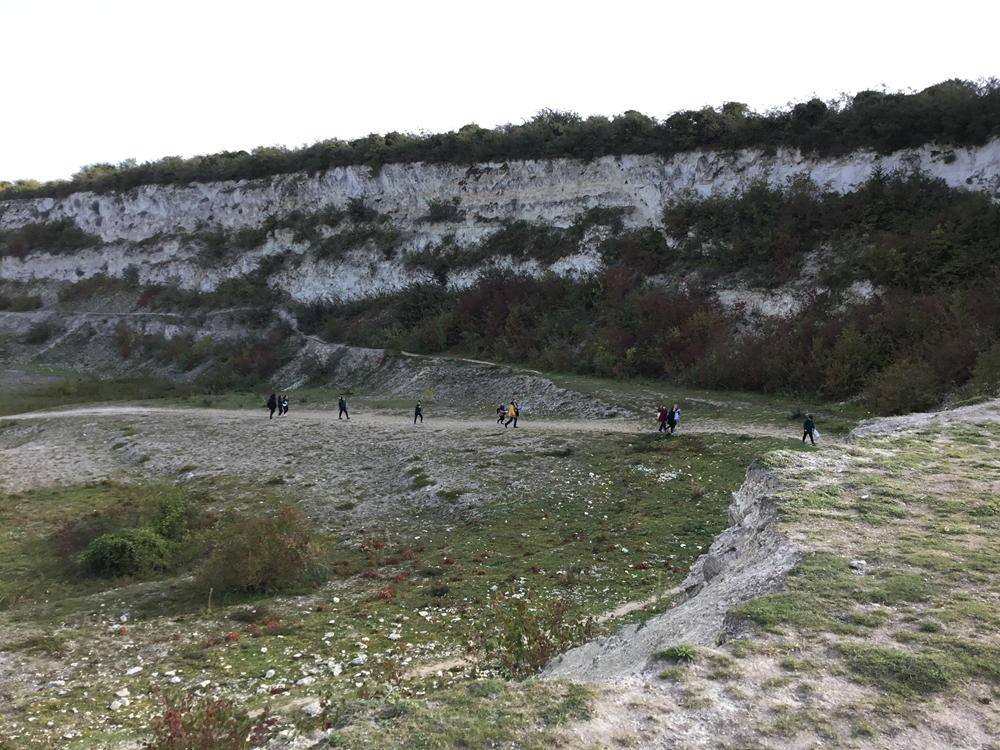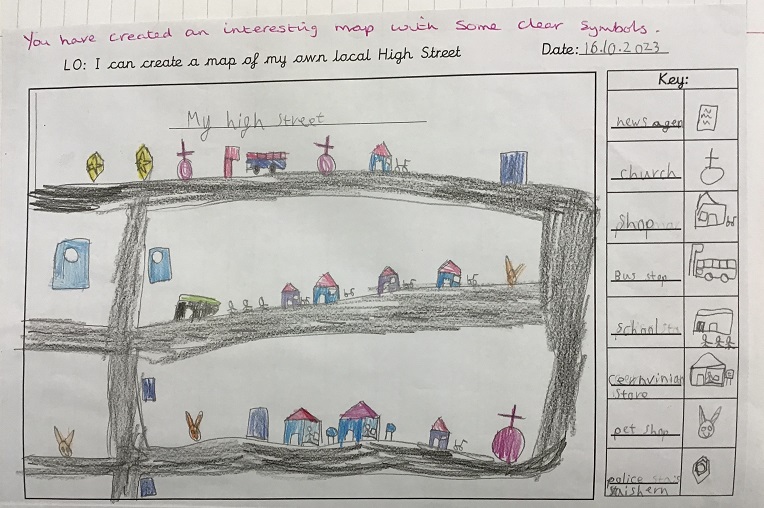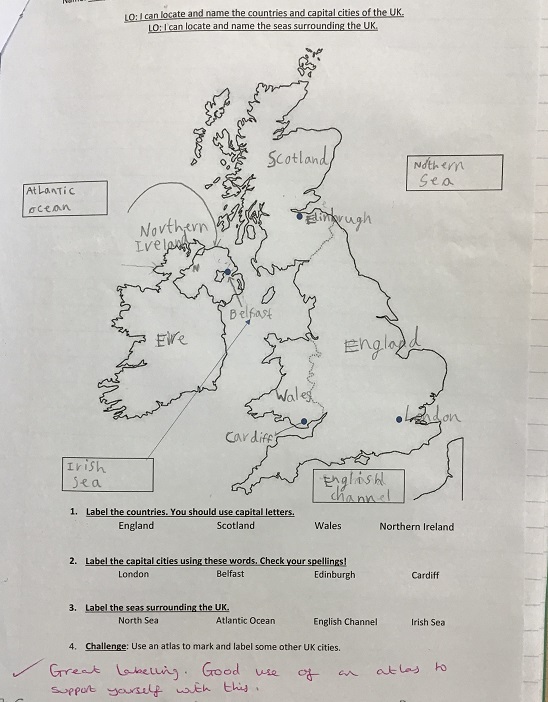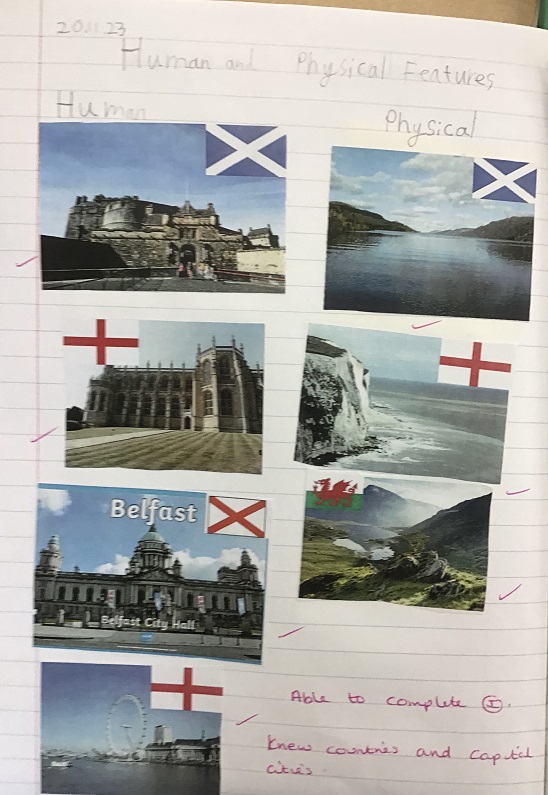Geography
Queens’ Federation: Geography Subject Statement
Intent
At the Queens’ Federation we aim to foster ‘Learning for Life.’
We will provide a rich, relevant and inspirational curriculum that promotes a lifelong love of learning and equips our pupils with the key knowledge and understanding, skills and personal qualities that they will need to thrive in a rapidly changing world. Our curriculum is designed to be relevant to our children and is linked to the context of our school and the local community.
At the Queens’ Federation, we aim to inspire pupil’s curiosity, interest and appreciation about the world and the people who live in it. We strive to provide pupils with a broad and balanced geography curriculum which develops their understanding of locational knowledge, place knowledge and human and physical geography. This is accompanied by the development and application of key skills, supported by fieldwork.
Implementation
Our geography curriculum is centered round the development of an understanding of the geographical area in which we live, including the schools grounds themselves. Pupils will learn about their immediate local area, the wider local community and where our community fits into Great Britain and the world beyond. The curriculum is designed to develop the key knowledge and skills to find out about diverse places, people, resources and natural and human environments, together with an understanding of the Earth’s key physical and human processes. Key geographical skills and knowledge are built upon year by year and are sequenced appropriately to maximize learning for all pupils.
Fieldwork, trips and visits are a key part of our geography curriculum. Our school environment and the local area is fully utilised within the curriculum and extensive opportunities for learning outside the classroom are embedded within units of work. The curriculum is enriched, wherever possible, through links to learning in other curriculum areas such as history, science and mathematics.
We view assessment as a holistic process, which takes place in every lesson through observation of, in questioning and in conversation with pupils and in the production of written outcomes. Geography assessment criteria set out the key knowledge and skills that a pupil should achieve at the end of each unit of work.
Impact
Our geography curriculum will inspire in pupils a curiosity and fascination about the world and its people which will remain with them for the rest of their lives, equipping them well for further education and beyond. As pupils progress throughout the school, they will develop a deep knowledge, understanding and appreciation of their local area and its place within the wider geographical context. Pupil outcomes evidence a broad and balanced geography curriculum and at the end of each year, pupils achieve age related expectations and retain the knowledge and skills learnt from each unit of work.
Yearly Overview
Below is a table of Geography topics for each year group by term:
Geography in the Foundation Stage
In the Early Years Foundation Stage, Geography is part of the Understanding the World area of learning and the aspect The Natural World, the children learn to make sense of their physical world and community. Their experiences help to increase their knowledge of the world around them.
Children in Nursery
- Learn there are different countries in the World and to talk about their differences through their own experiences and what they have seen in books and photos.
Children in Reception
- Learn to draw information from simple maps
- They explore the natural world around them
- They learn to recognise similarities and differences between life in the country they live and in other countries and to recognise that some environments are different from the one in which they live.
| Autumn | Spring | Summer | |
|---|---|---|---|
| Year 1 |
Light and Dark: Discussing the physical and human features around our school. Seasonal changes. |
Around the World: Learning the 4 countries of the UK, 7 continents and 5 oceans and finding these on a map. Seasonal changes. |
Human and Physical Features of Cherry Hinton Hall Park: Educational visit. Seasonal changes. |
| Year 2 |
Maps and the High Street: Name, locate and identify characteristics of the four countries and capital cities of the United Kingdom and its surround seas. |
Fire and Ice: Identify seasonal and daily weather patterns in the location of hot and cold areas of the World in relation to the equator and the North and South Pole. |
Sierra Leone: Compare and explain similarities and differences related to human geography. |
| Year 3 |
France: A comparison of a European country with the UK. |
India: Locating India, its surrounding countries and comparing life in India to life in England.. |
Where In The World Do I Live: Explore the city of Cambridge, the country we live in and the region of England we live in. Develop map reading skills and 8-point compasses. |
| Year 4 |
Changes: Land Uses. Atlas Skills. |
Across the Atlantic: California and East Anglia: comparing physical and human features and exploring energy sources. |
The Great Outdoors: Points of a compass, lines of latitude, longitude, climate zones and biomes. |
| Year 5 |
Arriving in Africa: Atlas work. Climate. Human Geography- tourism pros and cons (case study of Kenya). Physical geography. |
Geography of Egypt: Land and farming. |
|
| Year 6 |
WW2: Countries involved, locate UK cities bombed and why, use atlases maps, how has land use changed over time. South America: Locate main countries, identify main environmental regions, key physical and human characteristics, major cities, understand similarities and differences through studying the human and physical geography, volcanoes and earthquakes. |
Fairtrade: Economic activity including trade links, use six figure grid references, symbols and key. |
Cambridge: Local study, Google Earth, maps, use fieldwork to observe, measure and record the human and physical features in the local area. |
Please take a look at some photos of the activities the different year groups have been completing this year:
Academic Year 2023-2024
Year 6
On Thursday 14th February, to conclude our topic work on Fairtrade, Year 6 worked in groups of their choosing to create and make a new edible treat! We had to find and amend the recipe, provide the ingredients and equipment then bake it with only minimal help from our teachers. We also enjoyed preparing a stand, which included posters, logos and leaflets, as well as showing off our topic books. In the afternoon, we invited parents and friends to look at our new Fairtrade products, aiming to impress our guests and persuade them to vote for us! It was a lively afternoon, after a busy morning cooking. Everyone worked so well together to create their amazing brownies, delicious cookies and mouth-watering cake options!
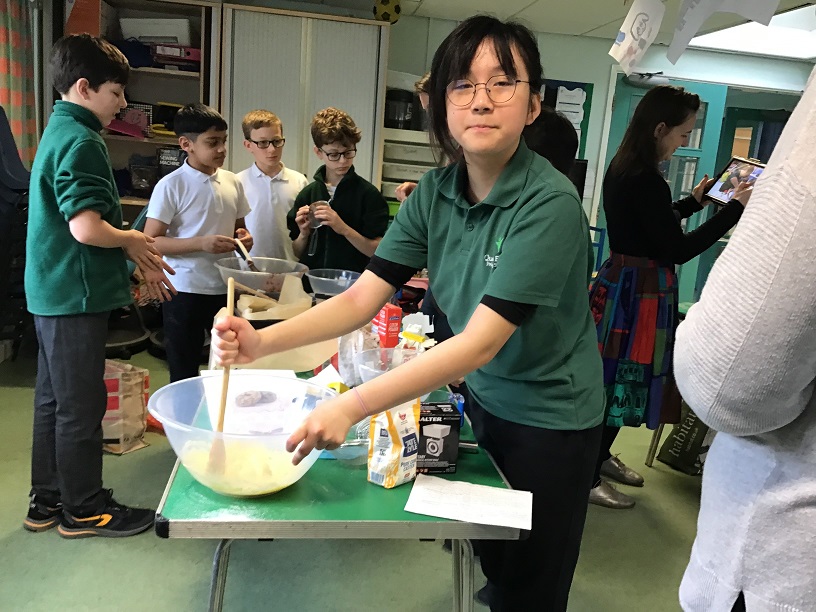
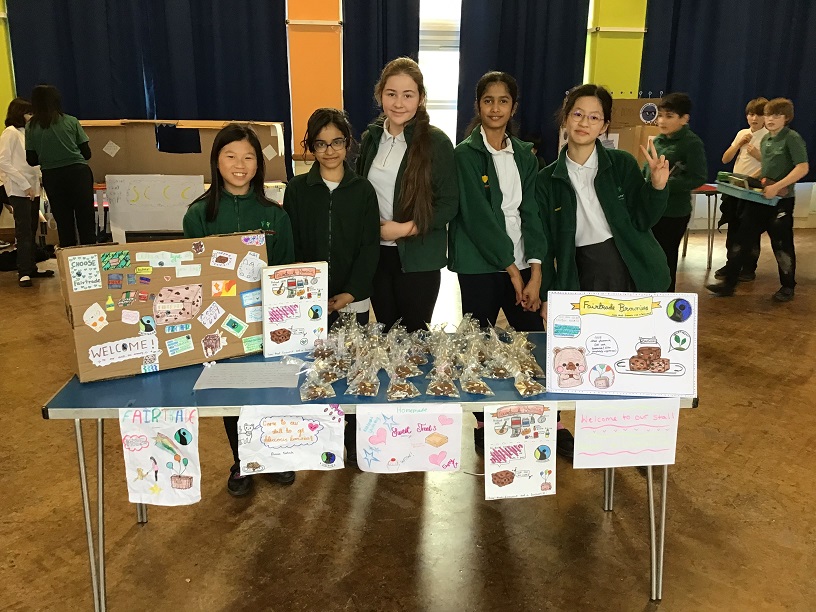
In the Autumn term, children in Year 6 studied the human and physical features of South America and annotated these onto maps. The children have also been looking at the causes of natural disasters and were able to explain their origins with increasing accuracy.
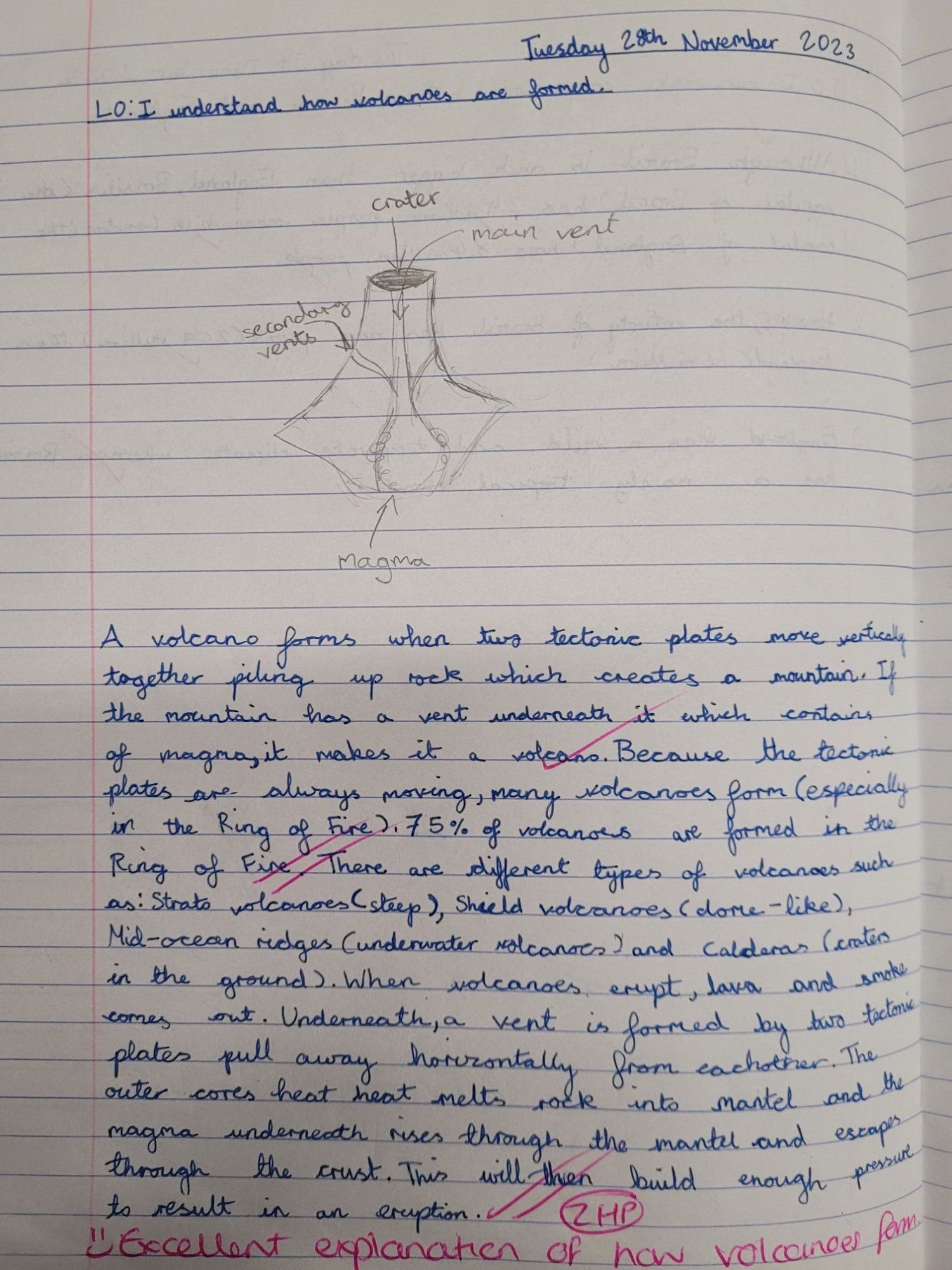
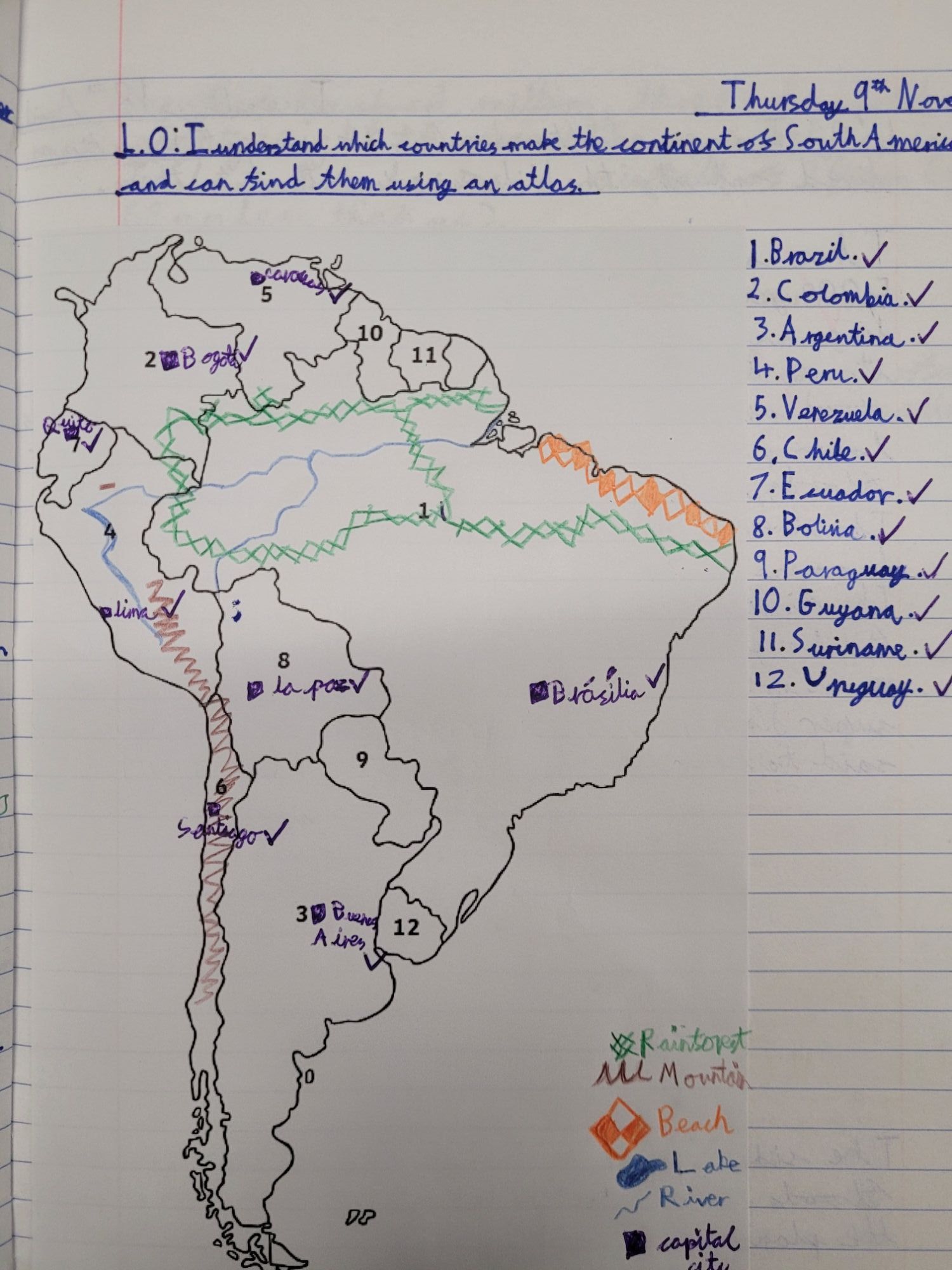
Year 6 have been learning how natural disasters occur. In the pictures, you can see our learning on volcanoes. We looked at how they were formed and what causes an eruption
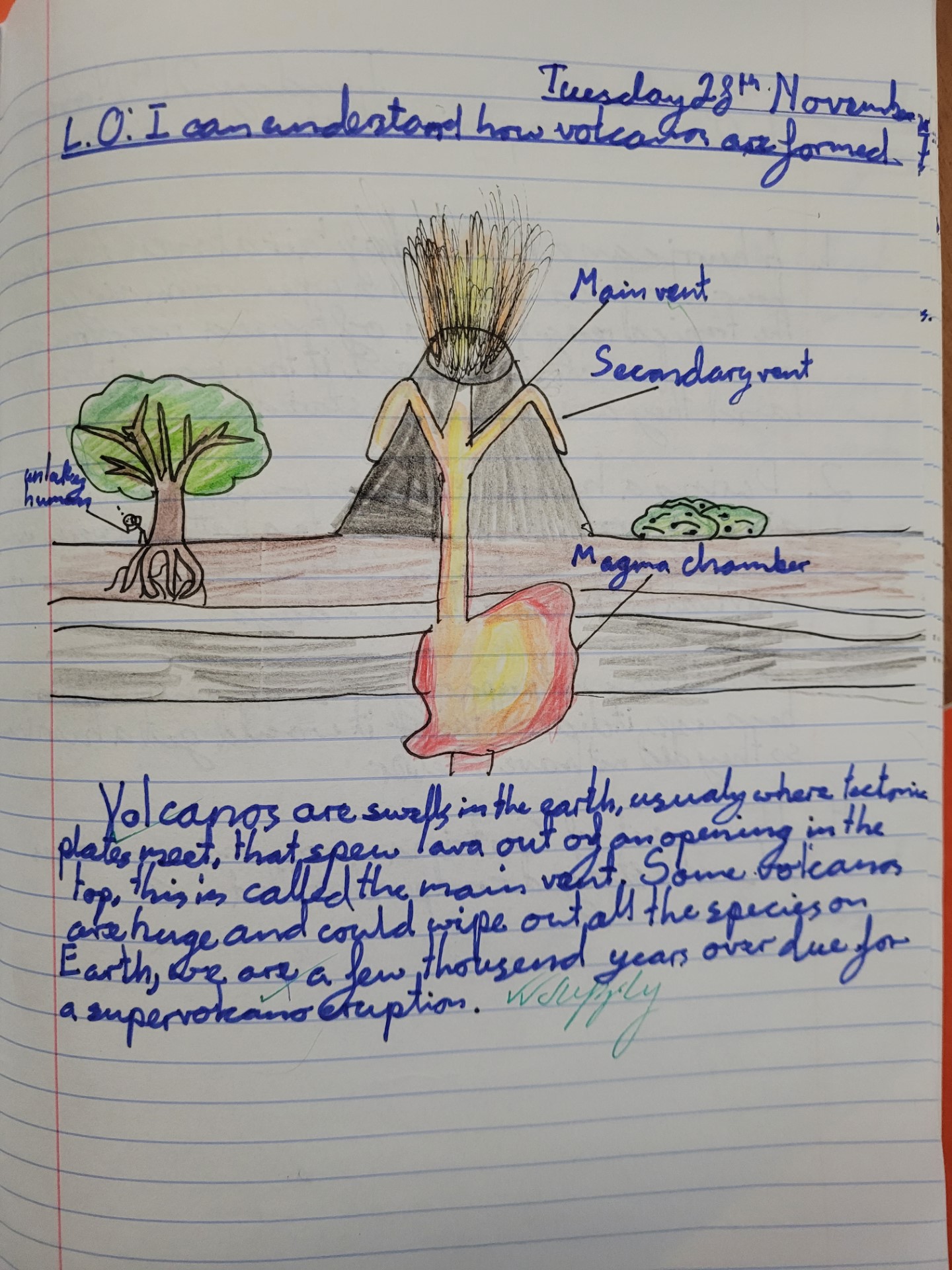
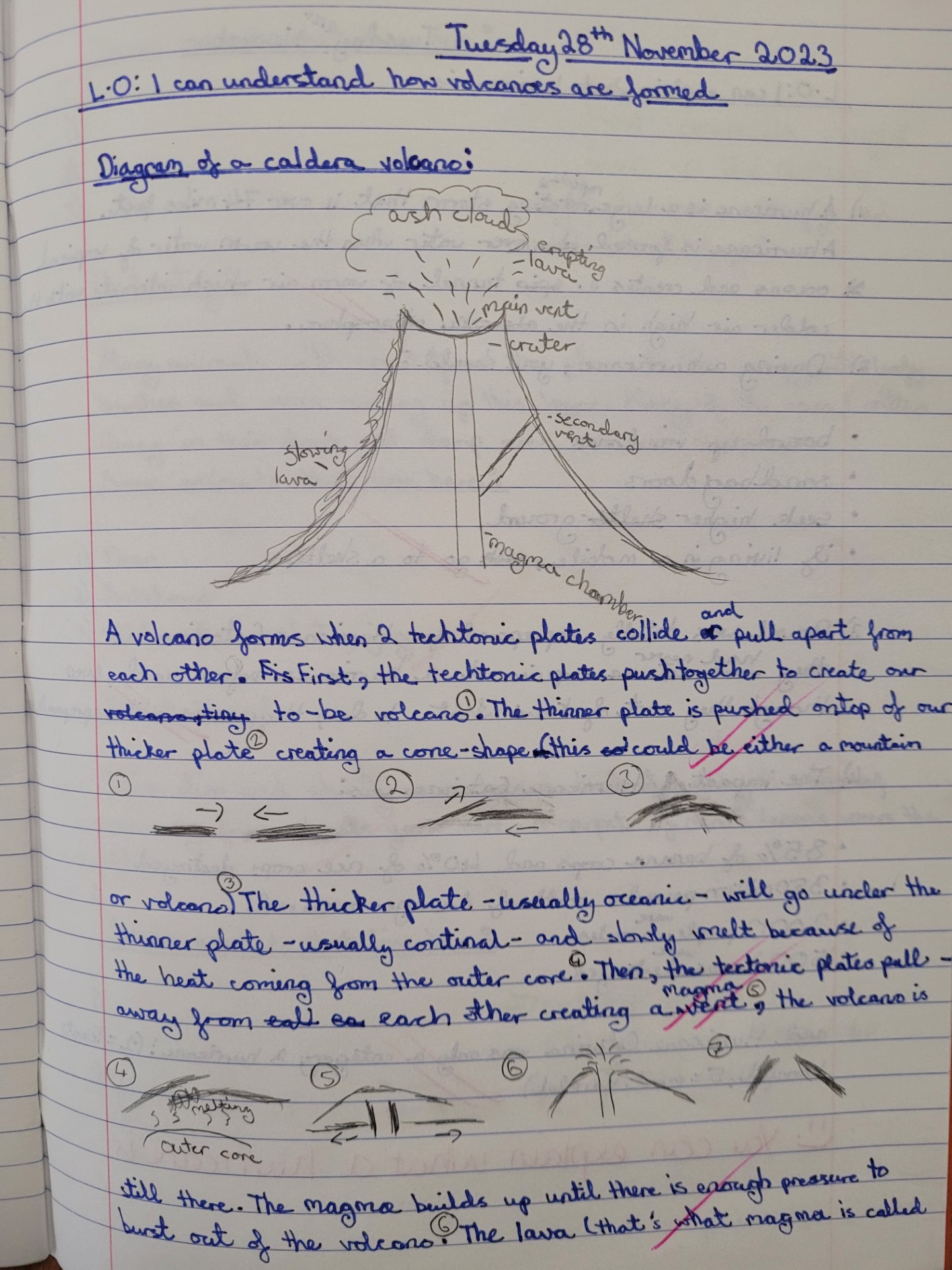
Year 2
In Year 2 the children have learnt about maps and keys. They have found out that symbols can be used on a map to depict features in a way that is clear and easy to read.
In Year 2 the children have used maps and atlases to locate the countries and capital cities of the UK and name the surrounding seas. They have learnt about some of the physical and human geographical features in each of the capital cities.
Reception
The gingerbread man and the fox have been in the Reception garden! What did they see?
Reception children looked at the local area on Google Earth and were able to identify key features such as Addenbrookes Hospital. The children enjoyed looking at our Reception garden on Google Earth and talked about the main features of the garden and how it has changed since the photo was taken! The children then drew their own maps thinking about which features should and shouldn’t be included.
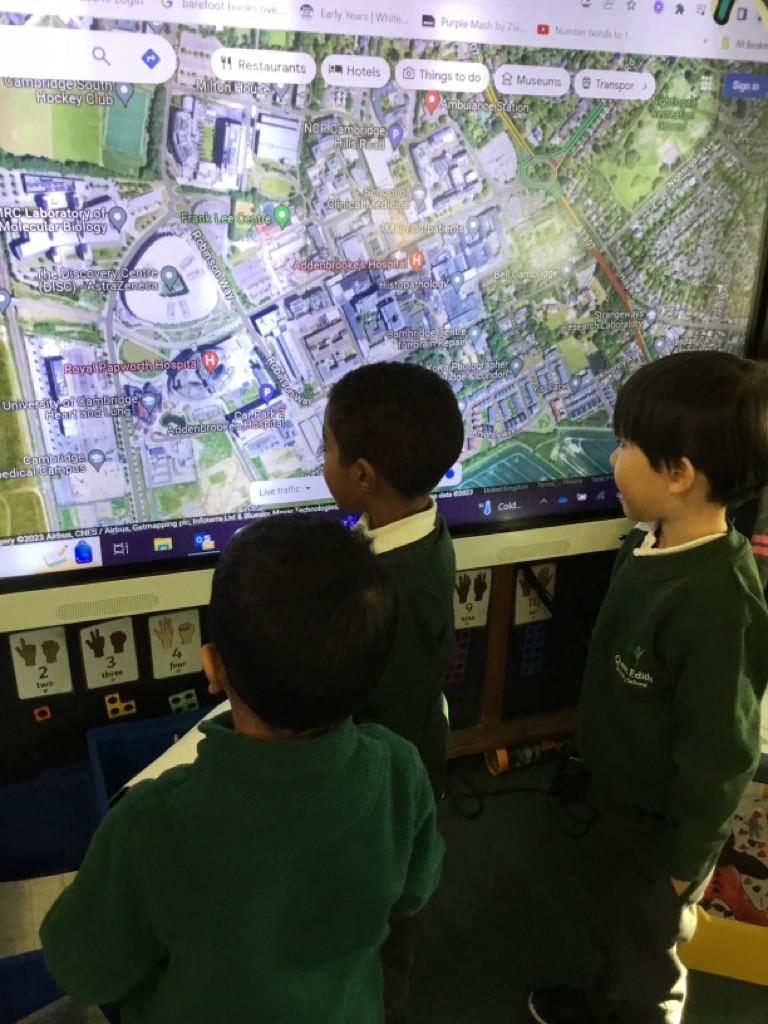
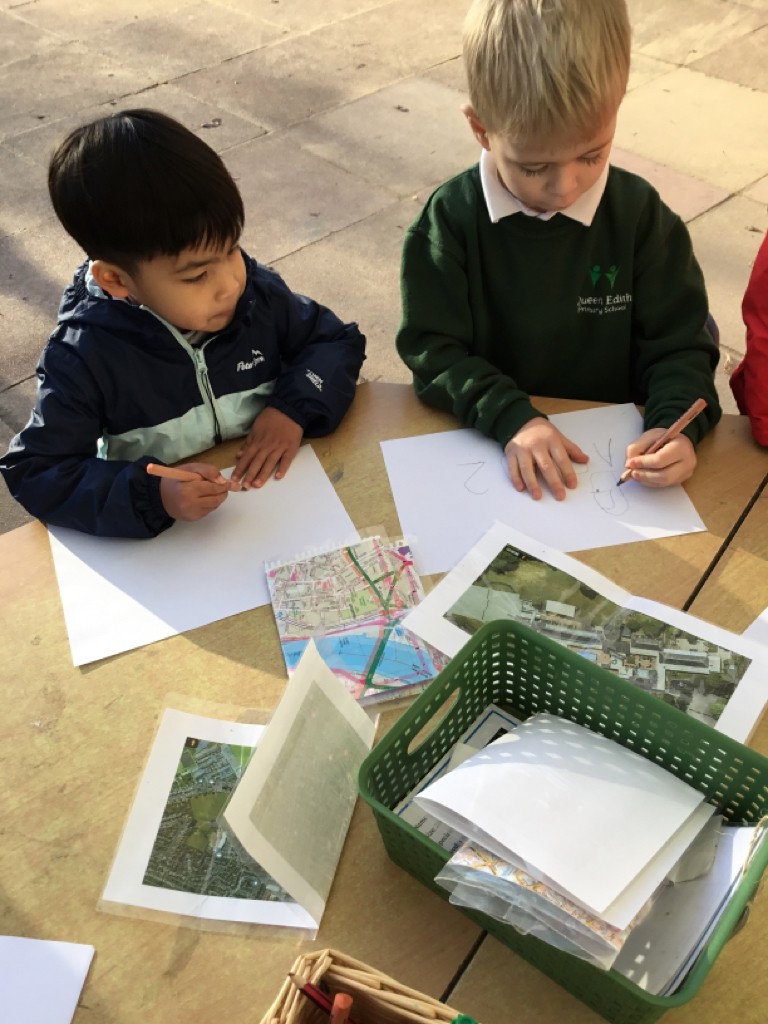
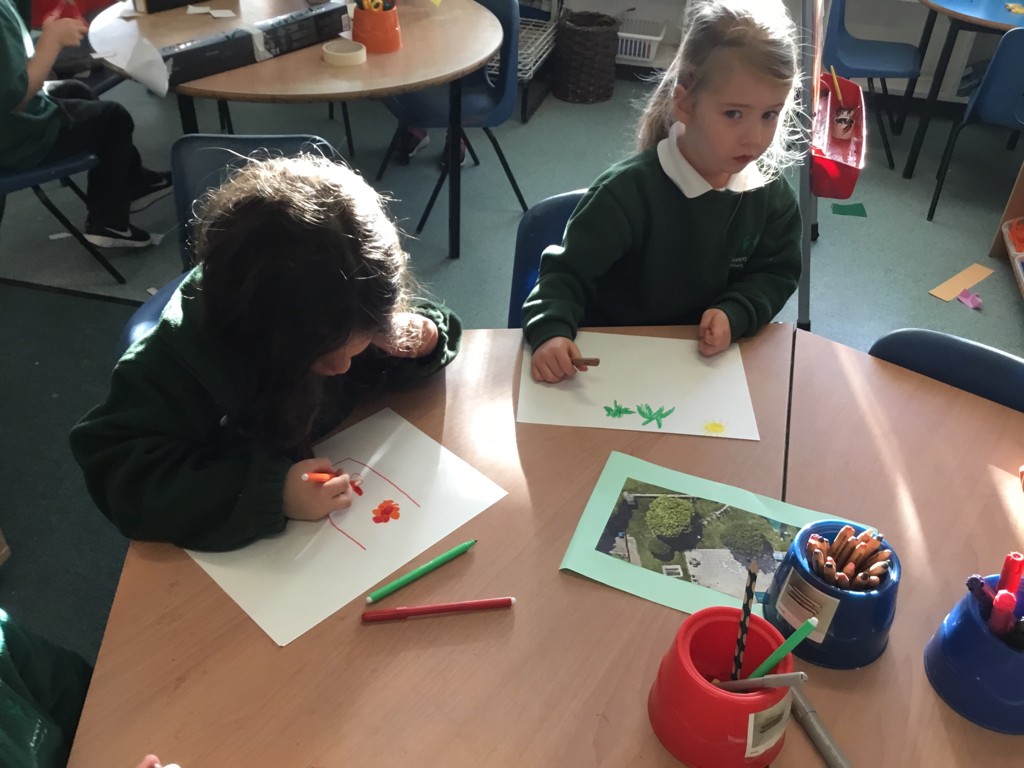
Year 4
This term, the children visited the Cherry Hinton Chalk Pits to see how it has changed over time. They looked at historical photographs and answered questions to see if they could notice the changes that have happened.
